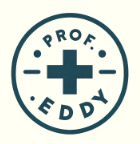My 10-Year 8-Constitution Diet: 5 Astonishing Phases of a Doctor’s Journey
As a student in a Korean Medicine university, I learned extensively about Sasang Constitution Medicine. However, the more nuanced 8-Constitution Medicine was a field I could only explore after graduation. I was fortunate to begin my career at a clinic specializing in it, allowing me to dive deep into its principles right away.
Before recommending the 8-Constitution Diet to my patients, I believed it was my duty to experience it myself. I received the constitutional acupuncture treatments and committed to the diet plan for my own body type—the Vesicotonia constitution.
There’s a debate about how strictly one should follow this diet. The founder, Dr. Kwon Dowon, advocated for complete avoidance of harmful foods. But after studying various medical fields alongside 8-Constitution Medicine, I’ve come to believe this view needs a more flexible interpretation.
I’ve been on this path for over a decade. Here is my honest review—a story of incredible highs, challenging lows, and profound lessons.
Phase 1: The Awakening (First 3 Months)
This initial period is often called the “awakening phase,” as the body attunes to the constitutional treatment. My experience was exactly that. I noticed a dramatic, undeniable improvement in my quality of sleep and overall well-being. I felt a lightness I had never achieved before, no matter how much I slept.
Something fascinating happened during this time. Foods that previously caused no reaction now triggered immediate responses. If I felt a sudden stomach ache or a wave of discomfort, I could almost always trace it back to a “harmful” food I had eaten. In 8-Constitution Medicine, this isn’t seen as a weakness. Instead, it’s interpreted as the body becoming healthy enough to immediately recognize and expel what doesn’t belong.
Phase 2: The Peak (3 Months to 1 Year)
This was a period of sustained high performance, fueled by the effects of the constitutional acupuncture and diet. My physical condition was excellent. Of course, life still happened—I developed my first-ever case of low back pain from the sheer volume of patients I was treating, but my underlying health felt robust.
My body’s sensitivity to harmful foods continued, though it was less acute than in the initial awakening phase. The 8-Constitution Diet was working, and I felt like I was living proof of its efficacy. I was confident and full of vitality.

Phase 3: The Plateau & The First Doubts (1 to 5 Years)
I continued to follow the diet consistently, although not with the same religious fervor as in the beginning. For instance, I would occasionally eat pork (a “harmful” food for my Vesicotonia type) but made sure to pair it with warming ingredients like garlic to balance its properties. During this period, I recall having almost no negative reactions to food.
However, this is when my health slowly began to decline. Looking back, I don’t believe the diet was the culprit. This phase taught me a crucial lesson that I now emphasize with all my patients: the 8-Constitution Diet is not everything. I realized that mental and emotional health are just as, if not more, critical than what you eat. Stress and psychological burdens were taking a toll that no perfect diet could fix.
Phase 4: The Trough (5 to 10 Years)
This was, without a doubt, the most difficult period for my health. The constitutional diet didn’t seem to help. Herbal medicine had no effect. Even the constitutional acupuncture, which I self-administered, yielded no response.
I felt a sense of despair, wondering, “What is the point of a long life if it’s lived so frail?” The most frustrating part was that every medical test I took came back normal. There was nothing clinically “wrong” with me, yet I felt chronically unwell. This experience gave me profound empathy for patients who suffer from conditions that modern medicine cannot easily diagnose or treat.
Phase 5: The Holistic Rebirth (10 Years to Present)
Today, following my constitutional diet feels natural and effortless. I don’t follow it with obsessive strictness, and my body rarely reacts negatively even when I stray.
So, what changed? I returned to the basics.
My health has returned to the level of my 20s, a time when I felt my absolute best. This transformation wasn’t thanks to a stricter diet or a new miracle cure. It came from focusing on two simple things:
-
Restarting a minimal, consistent exercise routine.
-
Letting go of the mental and emotional burdens that had become a huge weight on my mind.
Once I cleared that mental clutter, my body began to respond again. Herbal medicine, which was previously useless, started to show clear effects. I feel a deep sense of optimism that my health will continue to improve steadily.
Conclusion: A Diet is a Tool, Not a Dogma
It’s easy to think that personal experience or the theories of 8-Constitution Medicine are the only ways to judge a diet’s impact. But we must remember that millions of people around the world live long, healthy lives without ever hearing of it.
The 8-Constitution Diet is a powerful tool, but it should not become a source of stress or anxiety. The pressure to eat “perfectly” can sometimes cause more harm than the “wrong” food itself.
My decade-long journey has taught me that lifestyle, mental wellness, and daily habits are often far more important than any single dietary rule. Use the diet as a guide to understand your body better, but never forget to nurture your mind and spirit with equal care. They are the true foundations of lasting health.
For the original Korean text, visit here.
If you’re curious about the basics of traditional Korean medicine and health, read the following article:
The Truth About 8 Constitution Medicine: A Revolutionary Healing Framework Explained
Learn Why Studying JangSang Medicine is Important.
Frequently Asked but Silly Questions (Foods Good for the Liver??)
